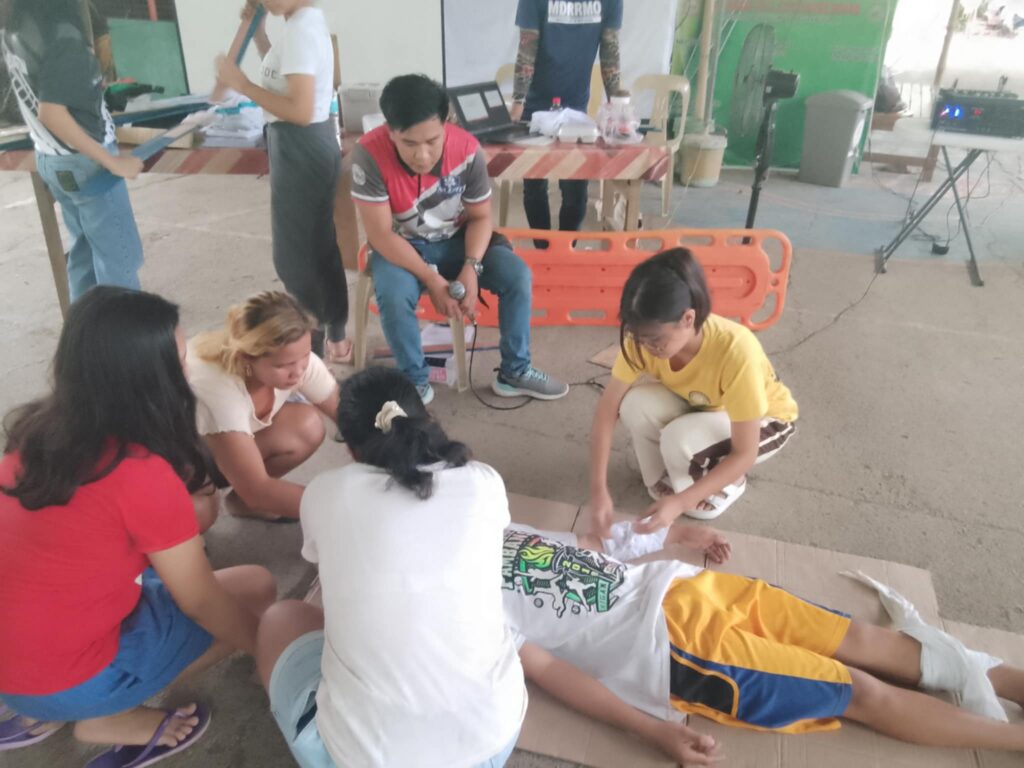
In a world full of unexpected twists, knowing how to react in an emergency can be the difference between life and death. As the pace of modern life picks up, one thing is clear: teaching essential skills to our youth is more important than ever. Among these skills, first-aid training stands out as a powerful tool that not only empowers young individuals but also builds a culture of safety and responsibility in our communities.
On July 2, 2024, the Municipal Disaster Risk Management Office (MDDRMO), in partnership with Solution Ecosystem Activators (SEA), Inc., hosted a first-aid training session in Brgy. Calumbuyan. It attracted 31 participants from civil society organizations and 15 from the youth sector. What made this event unique was the fact that youth participation outnumbered adults and Barangay Health Workers (BHWs), as noted by Mr. Kenneth Sobremisana. This is a rarity compared to other barangays where adults typically dominate the roster.
Why is youth participation in first-aid training so vital? Picture this: a lively schoolyard where kids are laughing and playing. Suddenly, a student collapses, and panic takes over. In such moments, having a trained youth nearby can shift chaos into calm. First-aid training gives young people the knowledge and confidence to step in during emergencies. Whether it’s performing CPR, treating minor injuries, or assessing the situation, these skills turn them into invaluable assets to their peers, families, and communities.

But it’s not just about responding to emergencies. First-aid training instills a deep sense of responsibility and leadership in young people. They learn critical thinking and problem-solving, skills that go beyond health and safety and are useful in every area of life—whether it’s academics, personal challenges, or future career paths. By stepping up, they become ambassadors of safety, sparking conversations about health and wellness among their peers.
When organizations like SEA, Inc. and the MDDRMO promote first-aid training, they create a ripple effect. Young people who receive this training inspire others to get involved, creating a more prepared, resilient community. This collective effort builds a community ready to tackle emergencies head-on.
Looking ahead, we must recognize the pivotal role of youth in shaping a safer world. By investing in first-aid training programs, we empower young individuals to become proactive members of society. Schools, parents, and community leaders must join forces to ensure that every young person has access to these life-saving skills.
Youth participation in first-aid training is more than an educational activity; it’s a movement towards a safer, more responsible society. By equipping our youth to respond to emergencies, we’re not only saving lives but nurturing a generation of compassionate, capable leaders. Let’s seize this opportunity to empower them and build a culture of safety that will echo for years to come.




Leave a Reply